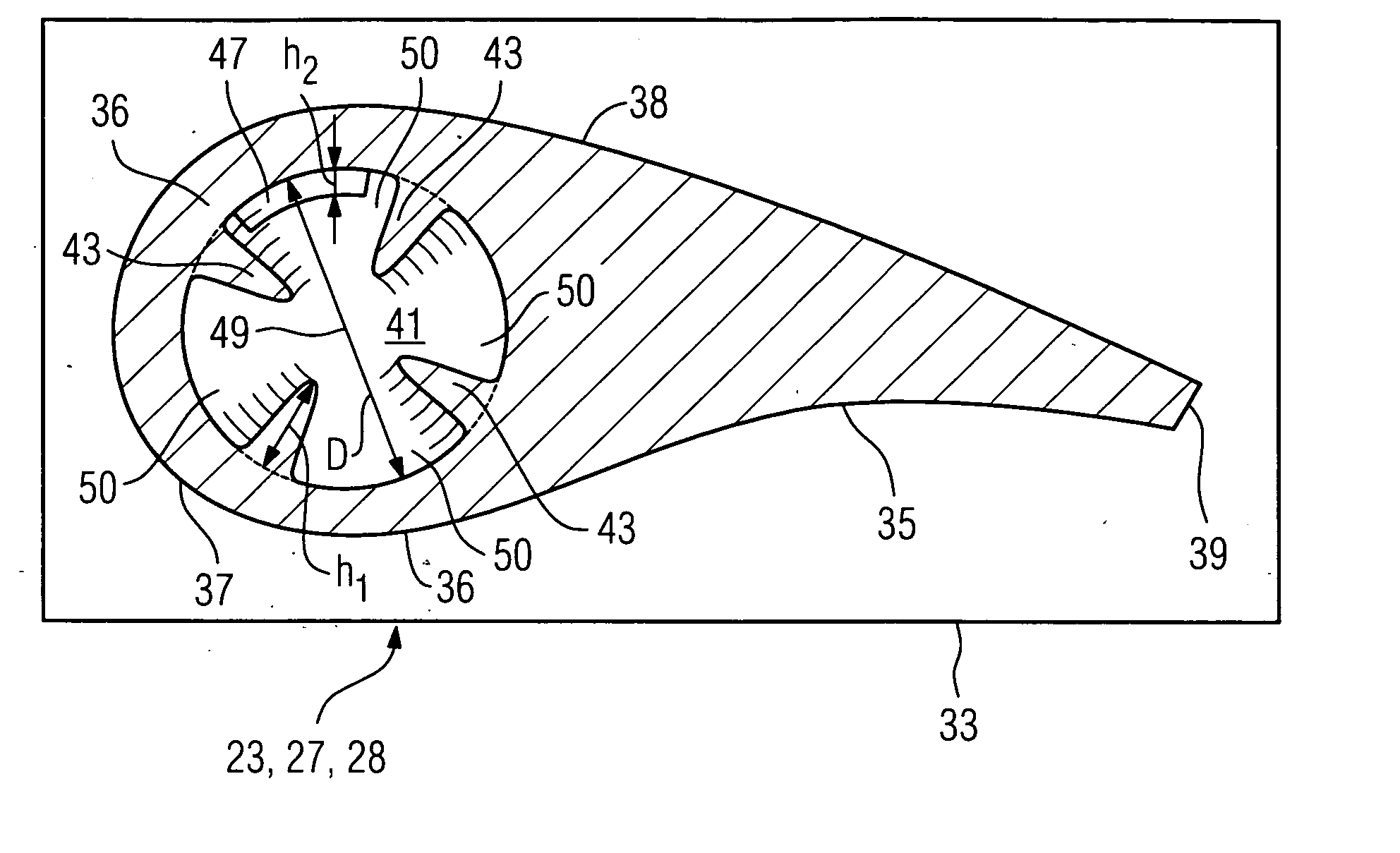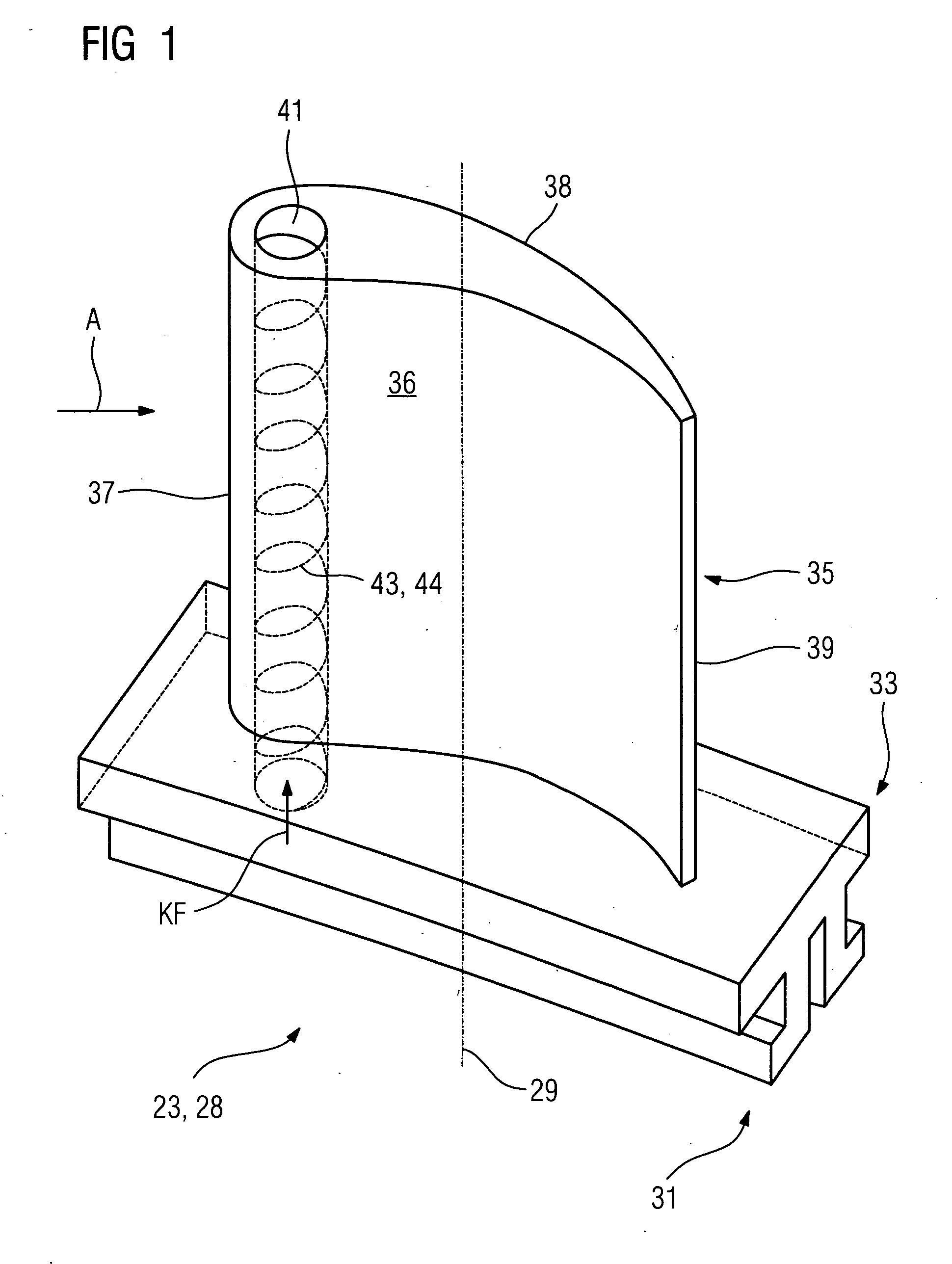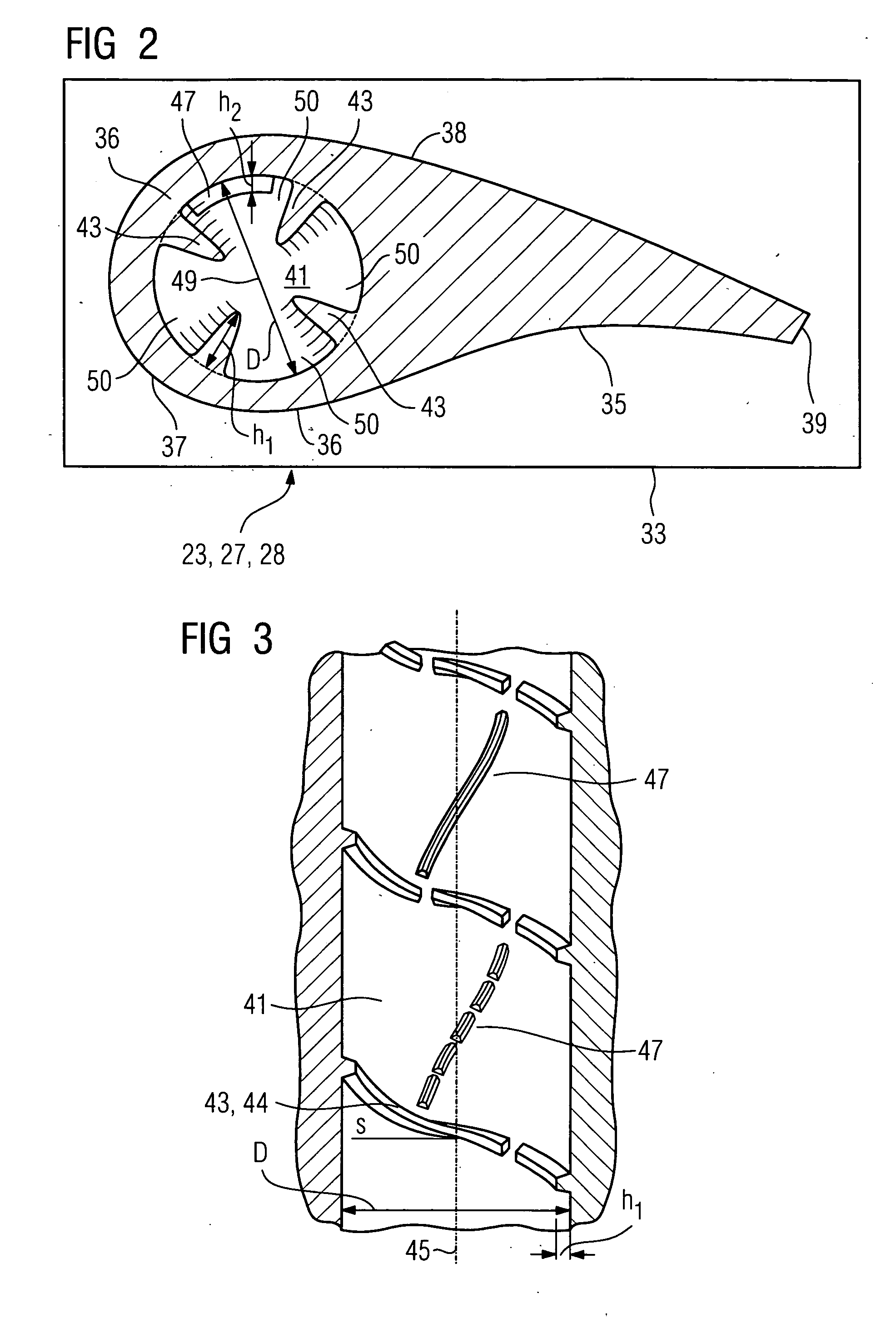Cooled component of a fluid-flow machine, method of casting a cooled component, and a gas turbine
a fluid-flow machine and fluid-flow technology, which is applied in the direction of machines/engines, mechanical equipment, light and heating apparatus, etc., can solve the problems of slowing down the flow velocity of cooling fluid, and achieve the effect of reducing the flow velocity
- Summary
- Abstract
- Description
- Claims
- Application Information
AI Technical Summary
Benefits of technology
Problems solved by technology
Method used
Image
Examples
Embodiment Construction
[0029] Gas turbines and their modes of operation are generally known. FIG. 6 shows a gas turbine 11 with a compressor 13, a combustion chamber 15 and a turbine unit 17, which follow one another along a rotor 19 of the gas turbine 11. A driven machine, e.g. a generator (not shown), is coupled to the rotor 19 of the gas turbine 11.
[0030] In both the compressor 13 and the turbine unit 17, guide blades 23 and moving blades 27 are provided in such a way as to follow one another in each case in blade rings 21, 25.
[0031] During operation of the gas turbine 11, air L is drawn in and compressed by the compressor 13. The compressed air is then fed to the combustion chamber 15 and is burned with the admixing of a fuel B to form a hot working medium A. The hot working medium A expands in the turbine unit 17 to perform work at the moving blades 27, which drive the rotor 19, and the latter drives the compressor and the driven machine (not shown).
[0032] In this case, the guide blades 23 and mov...
PUM
 Login to View More
Login to View More Abstract
Description
Claims
Application Information
 Login to View More
Login to View More - R&D
- Intellectual Property
- Life Sciences
- Materials
- Tech Scout
- Unparalleled Data Quality
- Higher Quality Content
- 60% Fewer Hallucinations
Browse by: Latest US Patents, China's latest patents, Technical Efficacy Thesaurus, Application Domain, Technology Topic, Popular Technical Reports.
© 2025 PatSnap. All rights reserved.Legal|Privacy policy|Modern Slavery Act Transparency Statement|Sitemap|About US| Contact US: help@patsnap.com



